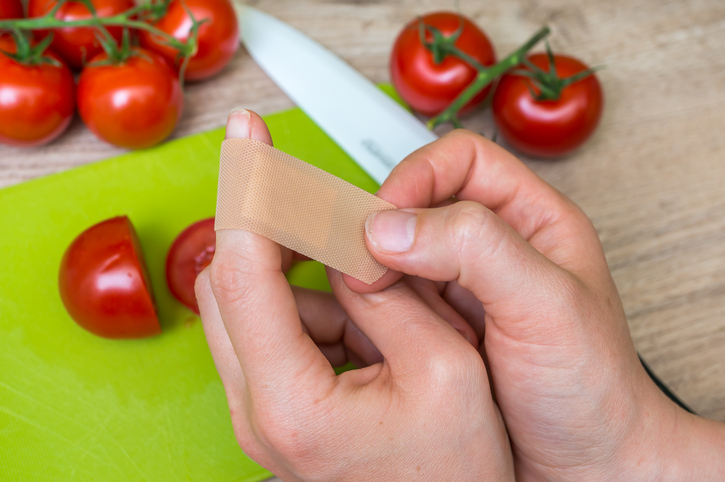We’ve all been there: you’re cutting a tomato, chopping onions, or mincing some garlic when you accidentally slice your finger with your kitchen knife. Just thinking about it makes us cringe. Knife accidents happen to the best of us. Even the most trained and talented chefs nick their hands from time to time. So as you add new culinary skills to your cooking repertoire, take a moment to learn this important one: how to heal a cut quickly and easily.
Knife cuts are extremely painful. It’s important to clean, treat, and dress them right away. But in the moment, when you’re trying to heal a cut, you might panic and forget what to do. Take a deep breath. Before you do anything else, assess if you can heal a cut on your own. If not, you’ll need help from a medical professional. If the bleeding is severe or spurting, call medical services. Additionally, if the cut is on a sensitive area like your face or chest, you’ll need some professional medical help. It’s important to note that as long as the cut came from a clean knife, you don’t run the risk of getting tetanus.
If you determine that you don’t need the help of a professional and can heal a cut at home, here’s what to do.

1. Stop the bleeding.
According to WebMD, pressure is the name of the game. Grab a clean tissue, paper towel, or piece of gauze, cover the cut, and apply direct pressure until the bleeding stops. If the blood persists and soaks through, add more material on top and keep applying pressure. You can also help slow down the bleeding by raising the cut above your heart.
2. Clean the cut.
Once the blood stops, wash the cut (and your hands, if the cut isn’t on your hands) with soap and warm water.

3. Protect and wrap the wound.
Despite what you may have heard, WebMD notes that you shouldn’t use hydrogen peroxide or iodine on the cut because it can cause damage to your tissue. Instead, apply an antibiotic cream like Neosporin to help reduce the risk of infection. Finally, wrap the cut with a clean bandage.
4. Monitor the cut.
Change the bandage every day and reapply antibiotic cream to help keep the cut clean. Keep an eye on how it’s healing. WebMD cautions that if the cut shows signs of infection, is gaping, or the area around it goes numb, call your doctor ASAP.

The next time you need to heal a small cut, remember these steps and you’ll be on the mend in no time.

